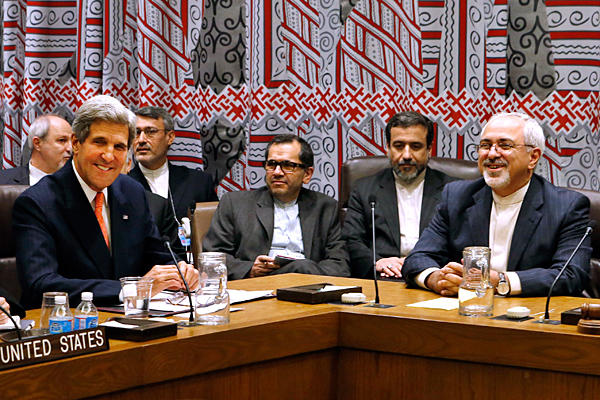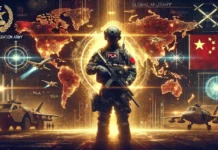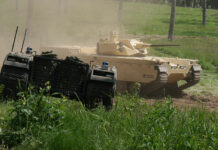If the framework for a Joint Comprehensive Plan of Action (JCPOA) announced in Switzerland on April 2 regarding Islamic Republic of Iran’s nuclear program and detailed in a US State Department Fact Sheet is successfully carried forward to an agreed Plan of Action (due to be concluded by June 30), it will be a major achievement, in spite of Israel’s concerns. Being extremely vulnerable in a highly explosive region, its comprehensive attitude should be well understood.
But the Lausanne framework should not be seen as the end of the process. It is a definitive step, but it will need to be followed by a number of concrete actions before we can consider that the Iranian nuclear problem has been resolved.
If the deal is agreed in June, and if it is faithfully implemented, which is highly doubtful, it could perhaps give all parties – Iran, its neighbors, and the wider international community – 15 years of breathing space. What ever the case, it remains essential to use this time effectively to ensure the deal doesn’t just ‘kick the can’ down the road. During this period decisions need to be made by Iran and the other partners of the deal, to ensure that the Middle East does not end up in a South Asia-style nuclear arms race. It is essential to ensure that the consequences for crossing the threshold remain high enough to deter Iran from doing so. This will require the US to keep a high level of engagement in Middle East affairs and constant alert by intelligence monitoring, for the foreseeable future. Unfortunately, judging by its performance since the outbreak of the ISIS war, this was so far hardly commendable.
It is by no means a forgone conclusion that Iran really wants nuclear weapons, though the Tehran Mullahs no doubt believe that having the capability to produce nuclear weapons within a relatively short time – what is termed nuclear hedging – has major strategic value for the Shi’ite State. Its main objective is to dominate the Sunni majority in the region and especially in the Persian Gulf and thus mainly curbing Saudi Arabian influence.
The U.S. must take a more active role in the region for what will be a race for “nuclearization” preferring energy development over weaponization. The Kingdom of Saudi Arabia, the nations of Egypt, Kuwait, the UAE, Jordan, Qatar, and Turkey will all attempt their own missile and nuclear programs with varying degrees of success and competence Saudi Arabia has been openly planning on acquiring South Korean, French, and Japanese reactors ostensibly to power desalinization plants That leaves Arabs and Persians, Sunni and Shi’a in what can only be described as a struggle of religious and deadly proportions across the spectrum of conflict and in possession of weapons, which cannot be contained, all this atop half the world’s oil and gas, and astride much of the world’s most vital shipping lanes.
With the problem of nuclear hedging in mind, an objective discussed earlier in the ongoing negotiations, was to establish the principle that Iran’s uranium enrichment capability should be directly linked to its demonstrated nuclear fuel needs. In current circumstances these needs are zero, because Russia is willing to supply fuel for the lifetime of Iran’s only power reactor, at Bushehr. For the future, Iran says it plans a number of reactors, both imported.
Russia has agreed to build eight, and would supply the fuel. But there is a dilemma in pushing the capability-not-exceeding-needs argument: the scale of any power generation need is much greater than Iran’s existing capability. Enrichment capability is measured in separative work units (SWU). Currently Iran has installed enrichment centrifuges totaling around 20,000 SWU, and is operating centrifuges totaling around 8000 SWU. Iran’s main enrichment facility, at Natanz, has room for 50,000 centrifuges – between 40,000 SWU (based on Iran’s first generation centrifuges) and perhaps 250,000 SWU if using more advanced models.
This compares with the capacity required to produce the annual fuel requirements for just one Bushehr-size reactor, around 120,000 SWU (and three times this to produce the initial fuel load). Only 5000 SWU are required to produce sufficient HEU (highly enriched uranium) for one nuclear weapon. So, the scale of a “legitimate” enrichment program easily dwarfs Iran’s current program. This could be why the capacity/needs principle was cleverly dropped from the negotiations by the Iranians. But it is an important principle, and it should never be accepted that nuclear hedging is a legitimate purpose under the Nuclear Non-Proliferation Treaty for a “peaceful” nuclear program.
Therefore it is essential for the international community to use the 15-year breathing space to address this problem of nuclear hedging. If others in the region become nuclear armed or even just nuclear capable, the strategic advantage Israel now enjoys will disappear. It would become extremely risky to rely on a nuclear deterrence under these circumstances. However for Israel to accept the longtime suggested “nuclear-free” Middle East zone would be even more unacceptable. The Jewish State surrounded by mortal enemies, with a radical Islamic State building rapidly, cannot be expected to disarm as a pre-condition for a WMD-free zone. It would certainly place such a small country under constant mortal threat to its very survival.
And the danger of nuclear Middle East is constantly rising, as Iran continues to develop its strategic offensive posture. Tehran already chooses ballistic missiles as its preferred method of delivering future nuclear weapons, once it decides to build them. Iran’s ballistic missiles are inherently capable of delivering WMD, and Tehran already has the largest inventory of ballistic missiles in the Middle East. Iran’s progress on space launch vehicles—along with its desire to deter the United States and its allies—provides Tehran with the means and motivation to develop longer-range missiles, including intercontinental ballistic missiles (ICBMs). Iran already possesses a substantial inventory of theater ballistic missiles capable of reaching as far as parts of southeastern Europe. Tehran is developing increasingly sophisticated missiles and improving the range and accuracy of its other missile systems.
The turbulent Middle East region will continue to decline, and instability, without strong and direct US leadership and involvement respectively, will only lead to greater conflict. Iran already represents a clear and present danger to the region, and eventually could threaten the entire world. The perceived acceptance of Iran’s nuclear program is likely to touch off a dangerous domino effect in the region, as other countries, such as the Kingdom of Saudi Arabia, look for strategic counterweights to the emerging Iranian bomb. A situation of strategic competition in nuclear capability will be horrendous for the already highly dangerous Middle East.










